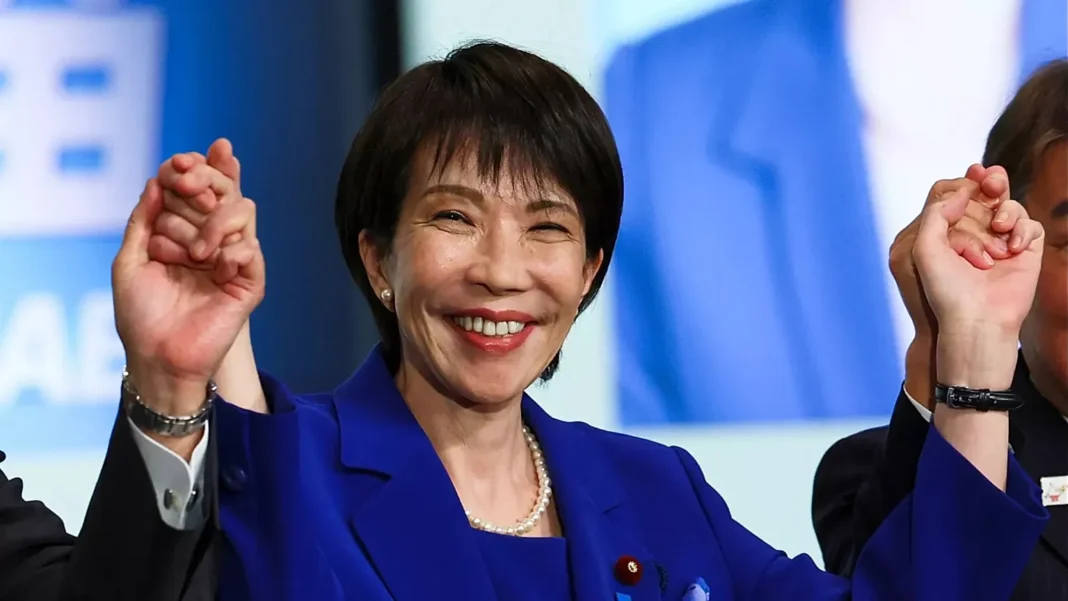Sanae Takaichi has secured the leadership of Japan’s ruling Liberal Democratic Party (LDP), putting her on the path to becoming the country’s first female prime minister.
The 64-year-old conservative politician won the party’s presidential runoff on Saturday, defeating Shinjiro Koizumi, the youthful and charismatic son of a former premier. She also bested Yoshimasa Hayashi, a seasoned but less dynamic contender.
Once confirmed by parliament — a process considered a formality — Takaichi will step into the role of Japan’s head of government, marking the nation’s fifth prime minister in as many years.

A Hardline Conservative, Not a Feminist Symbol
While her win is historic, political analysts caution against viewing Takaichi as a feminist breakthrough. Known for her strong stance on national defence and economic security, she has long aligned herself with Japan’s conservative establishment.
Takaichi has previously criticized China’s military expansion in the Asia-Pacific and has often visited the controversial Yasukuni Shrine, which commemorates war dead, including convicted war criminals — a move that has drawn criticism from neighboring countries.
Although she softened her tone during the most recent party race, in past campaigns she pledged openly to visit the shrine as prime minister, a position that cost her politically.
Political Context and Challenges Ahead
Her leadership comes at a turbulent time for the LDP. The party has been losing voter support amid rising inflation and a damaging slush fund scandal. Meanwhile, the nationalist Sanseito party has been gaining popularity with its anti-immigration rhetoric.
To appeal to disenchanted voters, Takaichi has adopted stricter views on immigration and foreign visitors, framing them as pressing issues during her campaign.

A protégé of the late prime minister Shinzo Abe, she has embraced his trademark “Abenomics” policies — advocating for expansive fiscal spending and monetary easing, despite concerns such measures could unsettle financial markets.
Gender and Leadership Style
Nicknamed “Iron Lady 2.0” and a self-professed admirer of former UK prime minister Margaret Thatcher, Takaichi once played drums in a college heavy metal band before entering politics.
Her views on gender equality, however, remain firmly conservative. She opposes reforms to Japan’s 19th-century law requiring married couples to share the same surname, a rule that overwhelmingly pressures women to take their husband’s name. Experts say the issue is unlikely to change under her leadership.
Nevertheless, she has pledged to significantly increase the number of women in her cabinet, promising a gender balance comparable to that of Nordic countries.
Japan’s Global Standing
Japan continues to rank low in global gender equality metrics, placing 118th out of 148 in the World Economic Forum’s 2025 Gender Gap Report. In contrast, Nordic nations such as Iceland, Finland, and Norway lead the rankings.
Supporters in the LDP’s conservative wing and followers of Abe have rallied strongly behind her, seeing her as a guardian of Japan’s national identity and security.
With her victory, Sanae Takaichi is set to make history as Japan’s first female prime minister, a development that signals both continuity and change in the country’s political landscape.




